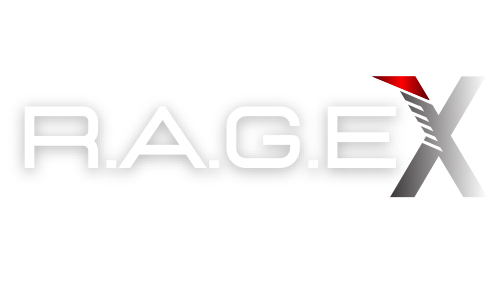In a remarkable demonstration of military prowess and strategic defense, Israel, supported by the United States, successfully intercepted almost all of the over 300 Iranian ballistic missiles and drones aimed at its territory. This operation occurred late Saturday night and involved a sophisticated, multi-layered missile defense system that the allies have cultivated over years. This report delves into the specifics of the interception, the technologies employed, and the geopolitical implications of this significant military engagement.

- Scale and Scope of the Iranian Offensive
- In an unprecedented display of aggression, Iran launched over 300 munitions toward Israel from its territory. This intensive attack spanned approximately five hours and was primarily aimed at military and strategic locations within Israel. The Iranian arsenal comprised a mix of 170 drones, over 30 cruise missiles, and more than 120 ballistic missiles, demonstrating Iran’s capability and intent to inflict substantial damage.
- Geopolitical Context
- This attack occurs within a complex geopolitical environment where Iran seeks to assert its dominance and challenge U.S. influence in the Middle East. The timing of the strikes, amid ongoing tensions in the region, suggests a strategic intent to test the defensive capabilities of Israeli forces and by extension, the reliability of American military support to its key regional ally.
Defense Systems and Interception
- Israel’s Missile Defense Arsenal
- Israel’s response was swift and effective, utilizing its advanced missile defense systems. The Iron Dome, primarily used for shorter range threats, intercepted numerous incoming rockets and drones. The system’s radar detects incoming threats and its battle management and weapon control system (BMC) quickly calculates the landing area of these projectiles, intercepting them if they pose a threat to populated areas or critical infrastructure.

- The David’s Sling system was tasked with countering medium to longer-range threats, including cruise and ballistic missiles. Its interceptor missiles, equipped with advanced radar and electro-optic sensors, provide a broader shield, engaging threats at higher altitudes and with greater accuracy.
- At the highest tier, the Arrow systems (Arrow 2 and Arrow 3) engaged long-range ballistic missiles. The Arrow 2 system targets missiles in the upper atmosphere using a high-explosive warhead, while the Arrow 3 extends this capability into space, intercepting ballistic missiles beyond the earth’s atmosphere, neutralizing them before they can re-enter and strike their intended targets.
- U.S. Support and Capabilities
- The U.S. support proved crucial in this defensive operation. Aegis-equipped naval destroyers stationed in the eastern Mediterranean were instrumental in intercepting several ballistic missiles. These destroyers, using the Aegis Combat System, tracked and engaged the incoming missiles with Standard Missile-3 (SM-3) interceptors, designed to destroy targets in space.

- Additionally, U.S. Air Force assets in the region, including fighter jets and airborne early warning aircraft, played a supportive role in monitoring the airspace and engaging threats before they could reach Israeli airspace. The deployment of these assets was a coordinated effort, reflecting the strategic military partnership between the U.S. and Israel, designed to maintain regional stability and counter Iranian military ambitions.
International Cooperation
- Allied Nations’ Contributions
- The UK and France also demonstrated their readiness to support Israel during this crisis. British Royal Air Force jets patrolled the skies, ready to intercept any projectiles within their operational range. Similarly, France expressed its commitment to regional security, deploying air defense resources that could be called upon to assist in the interception efforts.

- This collaborative defense posture among Israel, the United States, the UK, and France not only enhances the military response capabilities but also sends a strong diplomatic message to Iran regarding the collective resolve of these nations to maintain peace and security in the region.
Outcomes and Implications
- Military and Strategic Outcomes
- The near-total interception of Iranian offensive munitions with minimal casualties and damage is a testament to the effectiveness and readiness of Israeli and allied defense strategies. This event significantly underscores the deterrent power possessed by Israel and its allies, complicating any future aggression by Iran or other regional adversaries.
- Moreover, the incident has likely ramifications for Iran’s perception on the international stage. Demonstrating the limited impact of its offensive capabilities could deter Iran from future provocations, knowing the high likelihood of interception and the minimal strategic gains from such attacks.
- Broader Regional Implications
- Strategically, the successful interception may alter the tactical calculations of other regional players, who must now consider the advanced missile defense capabilities demonstrated by Israel and its allies. This could lead to a reassessment of military postures and potential shifts in alliance structures within the Middle East.
- Politically, the incident strengthens the case for further international cooperation among Western allies and potentially more extensive defensive pacts. It also emphasizes the importance of ongoing diplomatic efforts to address the underlying tensions that lead to such military confrontations, advocating for a balanced approach combining military readiness with proactive diplomacy to ensure long-term regional stability.
In conclusion, the interception of over 300 Iranian missiles and drones not only prevented significant harm but also showcased the advanced defensive capabilities and strategic foresight of Israel and its allies. This incident will undoubtedly influence future military engagements in the region, enhancing the prospects for maintaining peace through superior defensive technologies and international collaboration.




